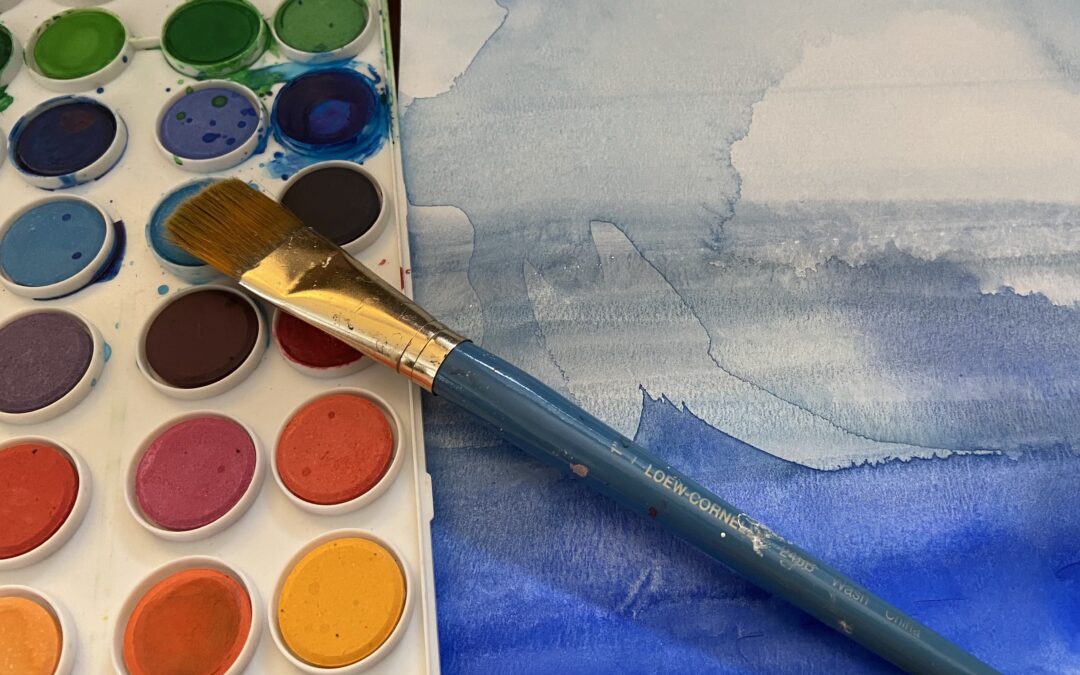What are the therapeutic benefits art therapy and of drawing or painting?
I get asked the question, “what are the benefits of art therapy?” on a pretty regular basis. I thought that it was worth sharing here too. The question seems simple enough, but the answer is extensive. Furthermore, the benefits depend on the treatment goals and the needs of the client.
Therefore, in the following, I will explore some of the benefits of art therapy based on my experiences and based on different art therapy settings.
Medical Settings for Stroke Patients
In the hospital setting, I have worked with stroke patients so that they start reorganizing their visual processing and motor skills through art therapy.
For Communication Disorders such as Autism Spectrum and Selective Mutism
People with communication disorders find they deepen personal relationships and express themselves better visually than through direct verbal communication.
In Acute Psychiatric Hospital Settings
I have seen antidepressants kick in faster with the use of art therapy in the hospital setting. (This is based on science of neurogenesis which is kickstarted by creative problem solving).
For Kinesthetic and Haptic Learners and for Learning Disabilities
I have seen kinesthetic learners and haptic learners be able to learn better and remember things through visual processing. Visual processing aids these individuals in ways that they cannot through auditory or visual learning. Furthermore, I have worked with several people who use the kinesthetic, haptic, and active body movements in art making as a way to self-soothe.
For Stress Relief and Somatic Symptoms
The sensory qualities of art making provide stress relief. Such clients find that they often feel overstimulated. Likewise, people with symptoms of anxiety or other physical, somatic symptoms find that they process through their bodies emotions and symptoms through body movements and active processes in art therapy.
For Treating PTSD
Art therapy researchers have increasing data to showing veterans with PTSD respond better to art therapy than through talk therapy. This is partially due to trauma being stored in the visual centers of the brain. Therefore, traumatic, and emotional memories are unaccessible through utilizing the verbal centers of the brain. Visual processing allows distance for the client so that they can then process the visual pieces utilizing the parts of the brain where those memories are stored.
Mainly, I now work with complex PTSD or cPTSD. This is term that apply to trauma that occurs over a long period of time due to a difficult childhood. The trauma that results is very different and is therefore treated differently for the client. This is why most of my clients meet with me on a weekly basis for the long-term, because we are repairing relationship and developmental trauma through depth psychotherapy. Art therapy is great for managing and relieving anxiety, managing triggers, and working through multi-generational trauma.
For Complicated, Traumatic, and Disenfranchised Grief
A lot of my grief clients find they don’t have words for what they went through or language is not adequate for expressing how they feel which is often ambiguous and in conflict. Art making has a way to utilize images to hold these types of seemingly paradoxical feelings and situations.
For Processing and Uncovering Unconscious Content
And finally, people often find that new ways of thinking occur to them after they create art or are discussing artwork they have made. When people make art, a lot of it is based on intuitive choices. Such choices include daydreams, or dreams, and seem to bubble out of the unconscious in a way that the individual was not consciously in control of. In this way, the creative unconscious informs the process. In contrast, focusing on conscious content relies on only the ego’s perceptions.
Final Thoughts
Art therapy utilizes myriads of techniques to uniquely position to be able to help people with individual needs. Because art therapy is a multidisciplinary field, it is also flexible enough to adapt to different settings and satisfy different needs and treatment goals. Art processes, like people, are multifaceted and nuanced. This clinical approach addresses both the changing demands of the world and give people tools for understanding and adapting to that world as challenges arise.


